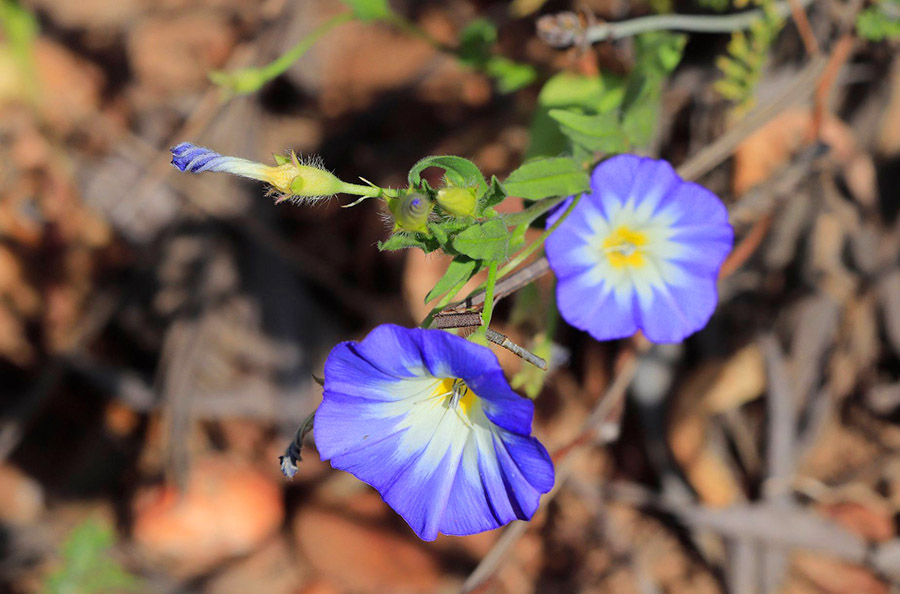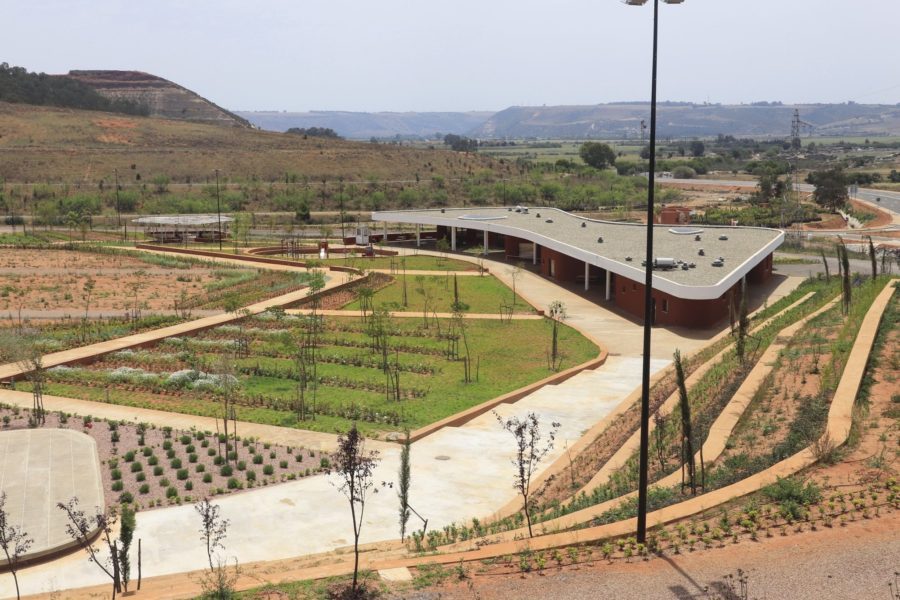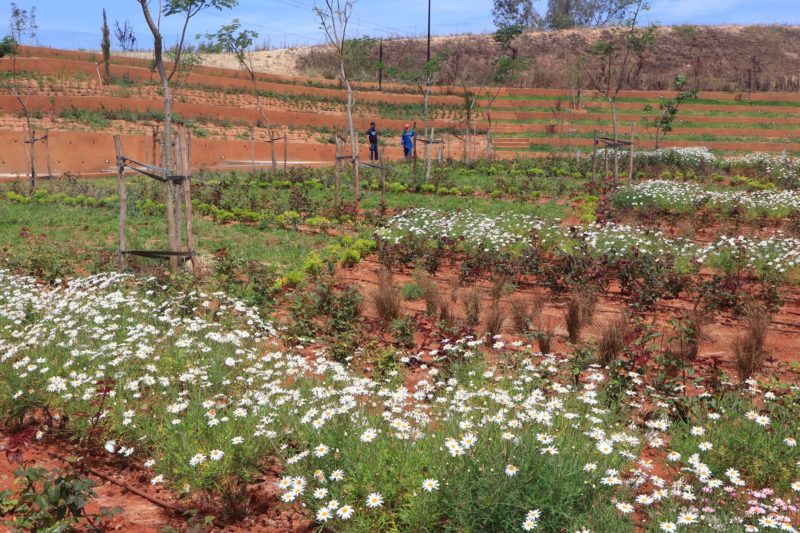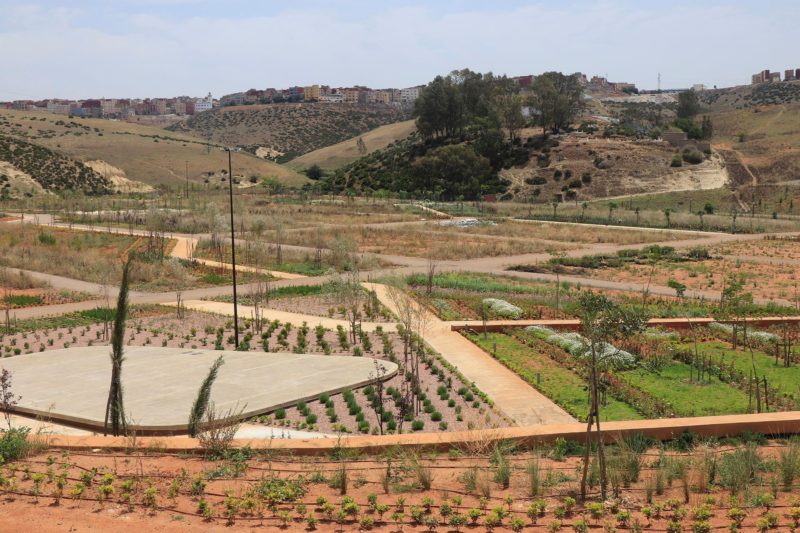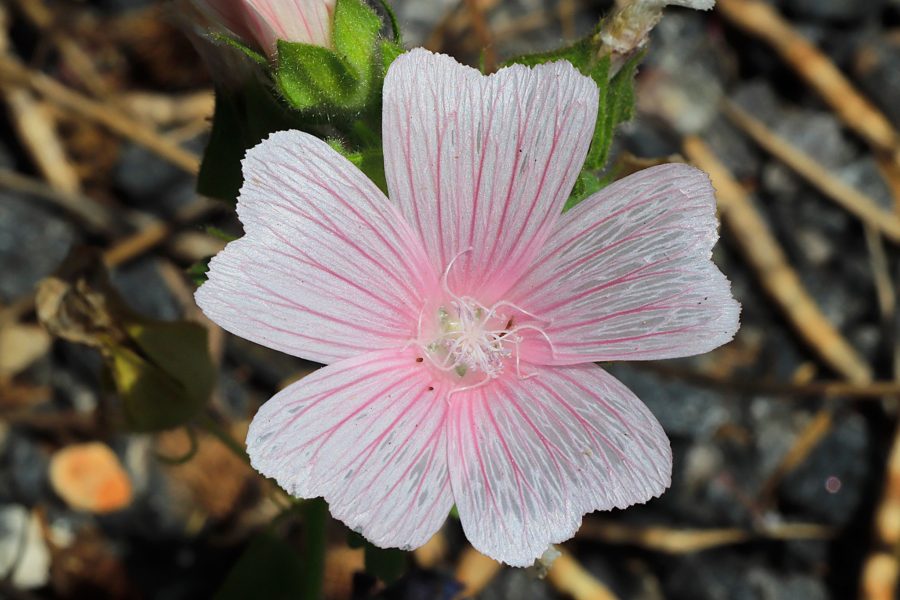Text and photographs by Inés Eléxpuru – FUNCI
We all know what has been and still being happening nowadays at our planet. There is no need to insist in it, except for outlying how Morocco has been and still is strict and prudent concerning the sanitary measures used for containing the pandemic.
At the middle of March, among all the restrictions established, similarly to other countries, and despite the low infections’ number, the Moroccan authorities urged the closing of schools and professional formation centres. In this context, our School of Gardening Med-o-Med Bouregreg in Salé didn’t hesitate in being one of the first institutions to close its doors. Nevertheless, due to part of our surrounding hectares are already seeded and blossoming, we had to maintain part of our gardeners and trainers team, in order to assure the proper maintenance, watering, weeding and the rest of activities required. This has been an essential and much needed work.
Fortunately, despite the teaching disadvantages surged from the pandemic management, the formative staff have been able to keep in close touch with the apprentices and, consequently, the theoretical training has continued.
The wooden stakes needed for the vegetable reproduction will be obtained from the plantations and plots skirting the roads leading to the future nursery.
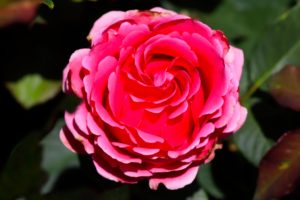 As it must be borne in mind, the School of Gardening in Salé is a titled professional formation project, with social, cultural and environmental vocations, aimed at giving working opportunities and a profession to young people at risk of social exclusion, from Rabat and Sale regions. Being conceived by the Islamic Culture Foundation for more than 7 years, it was finally established in 2018, in cooperation with the Agence pour l’Aménagement de la Vallée du Bouregreg (AAVB). This last and largely generous institution, delivered the land where the centre has been erected, and funded the building construction and the landscapist design. At the same time, other Moroccan and international institutions also contributed and still doing so.
As it must be borne in mind, the School of Gardening in Salé is a titled professional formation project, with social, cultural and environmental vocations, aimed at giving working opportunities and a profession to young people at risk of social exclusion, from Rabat and Sale regions. Being conceived by the Islamic Culture Foundation for more than 7 years, it was finally established in 2018, in cooperation with the Agence pour l’Aménagement de la Vallée du Bouregreg (AAVB). This last and largely generous institution, delivered the land where the centre has been erected, and funded the building construction and the landscapist design. At the same time, other Moroccan and international institutions also contributed and still doing so.
“Confined” Spring
Luckily, before closing our facilities, we managed to seed all the planned plantations surrounding the school -except the palm trees (Phoenix reclinata). The 110 different species, together with the plots destined for the apprentices’ practices, emerge as the centre’s visible presentation card. Also, the wooden stakes needed for the vegetable reproduction will be obtained from the plantations and plots skirting the roads leading to the future nursery. These elements will assure the school supply and the plant selling, which will be aimed at providing the school funding and guaranteeing its economic sustainability, while being loyal to its ecologic approach.
During this openly free and “desconfined”, rather than “confined”, spring, we have witnessed how most of the species have successfully taken roots, and the roses, lavenders, limonium, jasmines or wallflowers have displayed their beauty and scents. Hence, during these difficult and weird times we are living, this blossoming nature suppose a balsam for our senses and souls.
This is how gardens are, organic and changing entities in constant transformation and movement.
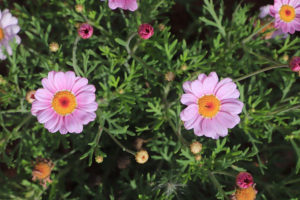 Despite all the good news, we have got some challenges, such as small fungus or insects infestations that are frequent during spring season. To face this little troubles, our trainers have developed special treatments with bacillus, nettle purine, beldi or handcrafted soap, copper and other natural substances.
Despite all the good news, we have got some challenges, such as small fungus or insects infestations that are frequent during spring season. To face this little troubles, our trainers have developed special treatments with bacillus, nettle purine, beldi or handcrafted soap, copper and other natural substances.
Wild plants diversity
Nevertheless, besides the already seeded gardens harmony, the most striking outcome has been the wild vegetable diversity surged all along winter and spring.
To understand our amazement, it must be considered that the School of Gardening lays in a smallholding adjacent to the old Oulja dumping site, which was the first of the Moroccoan facilities to be restored according to international regulations. Also, it is located on a stepped hill’s side, which used to be a clay quarrel extremely eroded. Because of that, the project’s eight hectares are constituted upon a much degraded land which required bringing soil and quality’s vegetable compost, mixed with progressive organic enrichment. Those new conditions have brought with them an enormous variety of new wild botanical species, that we will identify and classify, and after it new plants with higher ornamental value will be obtained from their seeds.
Besides the already seeded gardens harmony, the most striking outcome has been the wild vegetable diversity surged all along winter and spring.
This evolution has fostered the trainer and landscapist teams to reconsider the established designs for the production plots. Thereafter, these smallholdings won’t be designed uniquely for ornamental plants, but they will have several “transition” strips exclusively dedicated to hosting the spontaneous local flora, mainly for conservation, but also to improve landscape beauty and pedagogy
This is how gardens are, organic and changing entities in constant transformation and movement.
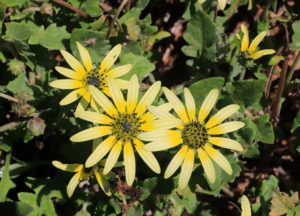 Hence, among all the different outcomes we have obtained during the confinement, the most outstanding one have been the wild vegetal diversity. In spite of the grief caused by the class halt, this surprising finding have pushed us to extraordinarily move forward the academic course, and to undertake a “scientific” work in collaboration with some Valencian botanists.
Hence, among all the different outcomes we have obtained during the confinement, the most outstanding one have been the wild vegetal diversity. In spite of the grief caused by the class halt, this surprising finding have pushed us to extraordinarily move forward the academic course, and to undertake a “scientific” work in collaboration with some Valencian botanists.
In this way, the school has created its own seed bank and in a near future it will print a guide detailing its rich biodiversity, that will include not just the flora, but also the fauna contained in this space.
Botanical amazements
Among these botanical amazements, which presence have delighted our senses, we will outline the Mallows large variety, amid whose we can find hispanica, featured by its astonishing fineness and soft texture, and silvestris, with great and beautiful rose flowers. It must also be highlighted wild achicoria (Cichorium intybus) presence, together with numerous field bindweeds. One of the most unusual of them, which possess high ornamental value, is Convolvulus tricolor that can be appreciated in this article’s cover. Between the compound ones, we can found the so called Cabo calendula (Arctotheca calendula, prior left picture), or other large size marguerites with shining colour like Glebionis coronaria. Furthermore, there is a small and discrete geranium with blatant leafs, Pelargonium odoratissimum.
In the stunning botanical specimen’s list that we have, the poppies also have a place, with the yellow one (Glaucium flavum) being specially interesting, due to its extraordinary visibility and meticulousness. Regarding the cardoons, Carduus, Eryngium and Onopordum, as we have too many which ones are too varied, the inventorying process have become highly complex. The nightshades, which are traditional in wild lands, also stand out, such as the henbane called Hyosciamus albus solanaceae, extremely poisonous, but with curious white flowers and small bell’s forms.
Among these botanical amazements, which presence have delighted our senses, we will outline te Mallows large variety , amid whose we can find the hispanica and the silvestris.
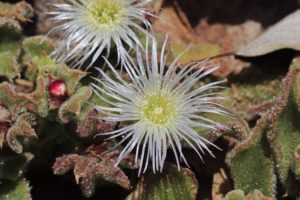 Amid the lupines, angustifolius and the luteus bloom, meanwhile the plantains and grasses variety is far wide. Different treasures are the subtle Linaria maroccana and Kickxia spuria, with small flowers, that are popularly known as “snapdragons”. At the same time, some other apparently humble species which grow at ground level, offer interesting pieces such as Mesembry anthemum crystallinum, that we can observe at the rear left picture.
Amid the lupines, angustifolius and the luteus bloom, meanwhile the plantains and grasses variety is far wide. Different treasures are the subtle Linaria maroccana and Kickxia spuria, with small flowers, that are popularly known as “snapdragons”. At the same time, some other apparently humble species which grow at ground level, offer interesting pieces such as Mesembry anthemum crystallinum, that we can observe at the rear left picture.
These has been just a small evidence of the large diversity that our School of Gardening Med-O-Med Bouregreg has, even though, it remains uncomplete without our beloved and missed apprentices, which we enthusiastically wish to see them soon, carrying all their renewed dreams and hopes.
Cooperative entities
This project wouldn’t be possible without the much valued collaboration from: Ministère de l’Éducation Nationale et de la Formation Professionnelle, INDH (Initiative Nationale pour le Développement Humain), Région de Rabat, Salé, Kénitra, Entraide Nationale, Fondation Drosos, AECID (Spanish Agency for International Cooperation and Development), and ALSA.
Translation by Toni Sastre.
This post is available in: English Español

